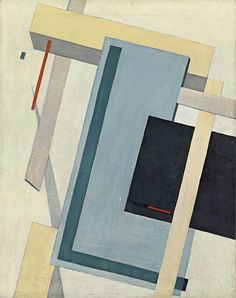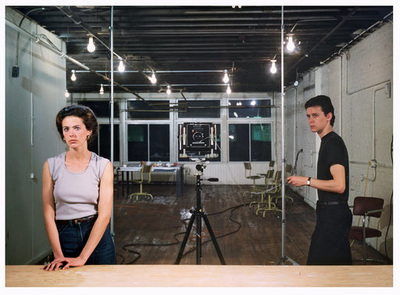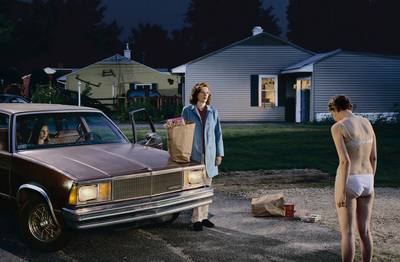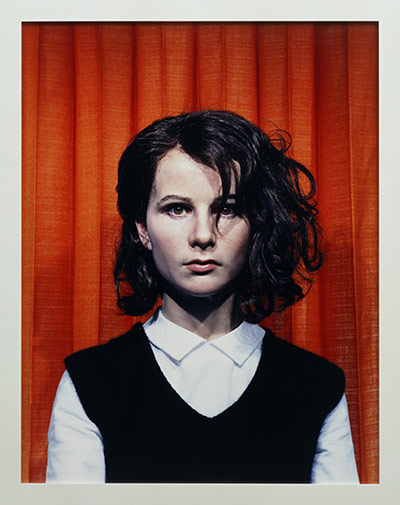Photography has many genres...
|
Should Steven Spielberg ever decide to run with Threshold Concepts: The Movie - for which I'm not holding my breath (quick synopsis: intrepid young photographer navigates 10 significant obstacles, each one a doorway to untold rewards) - I'm visioning TC#1 will feature a thick curtainous web made up of every photograph ever (CGI, obviously). For if contemporary art photography is one thing it's a tangled tapestry - of styles, techniques, purposes, functions and concepts - that can be difficult to get around.
So where to begin? Identifying and understanding photography genres is an obvious starting point. A common activity for this is a group brainstorm (the one on the right being taken from a new year 12 class). But whilst this can provide opportunities to elaborate on key terms - candid, photo-journalism etc. - it can also be quite limiting and predictable. It rarely addresses the big elephant in the room - the one holding a camera trumpeting: I'm an artist! I'm an artist!! and generally wondering how they fit in to all of this. Perhaps a more valuable starting point for new classes might be this lesson on the meaning of photography which begins to scratch a little deeper. As an introduction it might also lead neatly into addressing the following... |
Artists/ photographers often play with our expectations about genre for creative purposes...
For quite a while after its 'birth' in the 1830s, photography played second fiddle to painting. Despite Fox Talbot's claim that photography was the "pencil of nature" it took a while before artists began to see the creative potential in photography, suspicious about its mechanical and chemical processes. Photographers were keen to compete with painters and often printed their images to look like paintings or drawings. Eventually, photography began to create its own genres, reflecting the particular abilities of the camera - photojournalism, documentary, fashion etc. However, the relationship between art and photography has always been a contested issue and continues to be a source of frustration and inspiration for many contemporary artists and photographers.
In most instances - and certainly regarding commercial photography - identifying photographic genres is fairly straightforward. All students are able to distinguish a portrait from a landscape; a sports photograph from a still-life; a wedding scene from a war zone. Fingers crossed. And from there it's hardly a significant leap to understand that genre boundaries can also blur - a fashion advertisement in the style of a street photograph; a street photograph functioning as photo-journalism, and so on. So the sticky bit of Threshold Concept 1 is really how (and why) artists explore and exploit understanding of genres for creative purposes.
In most instances - and certainly regarding commercial photography - identifying photographic genres is fairly straightforward. All students are able to distinguish a portrait from a landscape; a sports photograph from a still-life; a wedding scene from a war zone. Fingers crossed. And from there it's hardly a significant leap to understand that genre boundaries can also blur - a fashion advertisement in the style of a street photograph; a street photograph functioning as photo-journalism, and so on. So the sticky bit of Threshold Concept 1 is really how (and why) artists explore and exploit understanding of genres for creative purposes.
Untangling photography genres using the work of Jeff Wall
|
Jeff Wall is a Canadian photographer who has played a key role in establishing photography as a contemporary art form. At first glance much of his work might be filed under 'documentary' or 'snapshot'. However, all is not what it seems, which makes for an interesting starting point when considering photography genres.
[Jeff] Wall divides photographers into two camps, hunters and farmers, the former tracking down and capturing images, the latter cultivating them over time. At first glance Untangling appears to be a documentary shot of sorts; a plausable enough scene of mechanics in a workshop. But the heightened sense of stillness and melancholy - emitted from the mechanic on the left - begins to creep in and raise doubts. A perfect tangle indeed.
|
Jeff Wall has explored a wide variety of approaches to image-making but is perhaps best known for staging elaborate scenes - often using actors - comparable to theatre or film sets. These are then developed as large transparencies presented in lightboxes.
In small groups, consider the 4 images above by Jeff Wall.
- What types of photographs are these? (You might consider genres such as Photojournalism, Street Photography, Still-Life, Snapshot, Candid, Abstract)
- Which (if any) seem obviously staged? And if so, why? What are the clues that suggest these might be 'constructed' images?
- Why might the artist want to mislead the viewer (but perhaps not fully)?
- Do any/all of the images leave you with questions or wanting further information?
- What role do the titles of the photographs play in shaping your understanding?
- Do some/all of the images have a similar style?
At first glance they often appear to be snapshots but, on closer inspection, the multi-layered content sometimes seems too bizarre or complex to be real. Now consider the 4 images on the right. These include:
Pair these 4 images with those by Jeff Wall.
|
"Wall draws upon a myriad of references from art history, particularly nineteenth century painting." |
Jeff Wall has been described as 'a painter of modern life', which - like his work - may seem a little misleading. However it does emphasise the ambitions he held for his photography, influenced by Old Masters such as Diego Velazquez, Francisco Goya and significantly, French artist, Edouard Manet.
Both works become about the sensation of sight and the mysteries of representation. |
Jeff Wall has described his photograph, 'Picture for Women' as a remake of Manet's 'A Bar at the Folies-Bergére, 1882'. He likened this to the same way a movie might remake an older version - using new technologies with updated twists. Both works initially appear to be straightforward recordings of a scene. However, Manet's painting - the subject of much debate - is full of ambiguity. Questions hover over the seemingly inaccurate reflections, and the direction of eye-contact between barmaid and customer, but also, significantly, with us too, the viewer. Wall's response continues these themes of how we see and record. Like Manet, his work is suggestive of a documentary approach, but in truth both have produced highly calculated studio responses. |
Exploring genres, playing with expectations...
Below are some other artists/photographers that have played with our expectations of genres. Click on the images for names and links to further information.
Still life
Staged / Tableau
Snapshot lies
Appropriated
Altered Landscapes
By Chris Francis






























